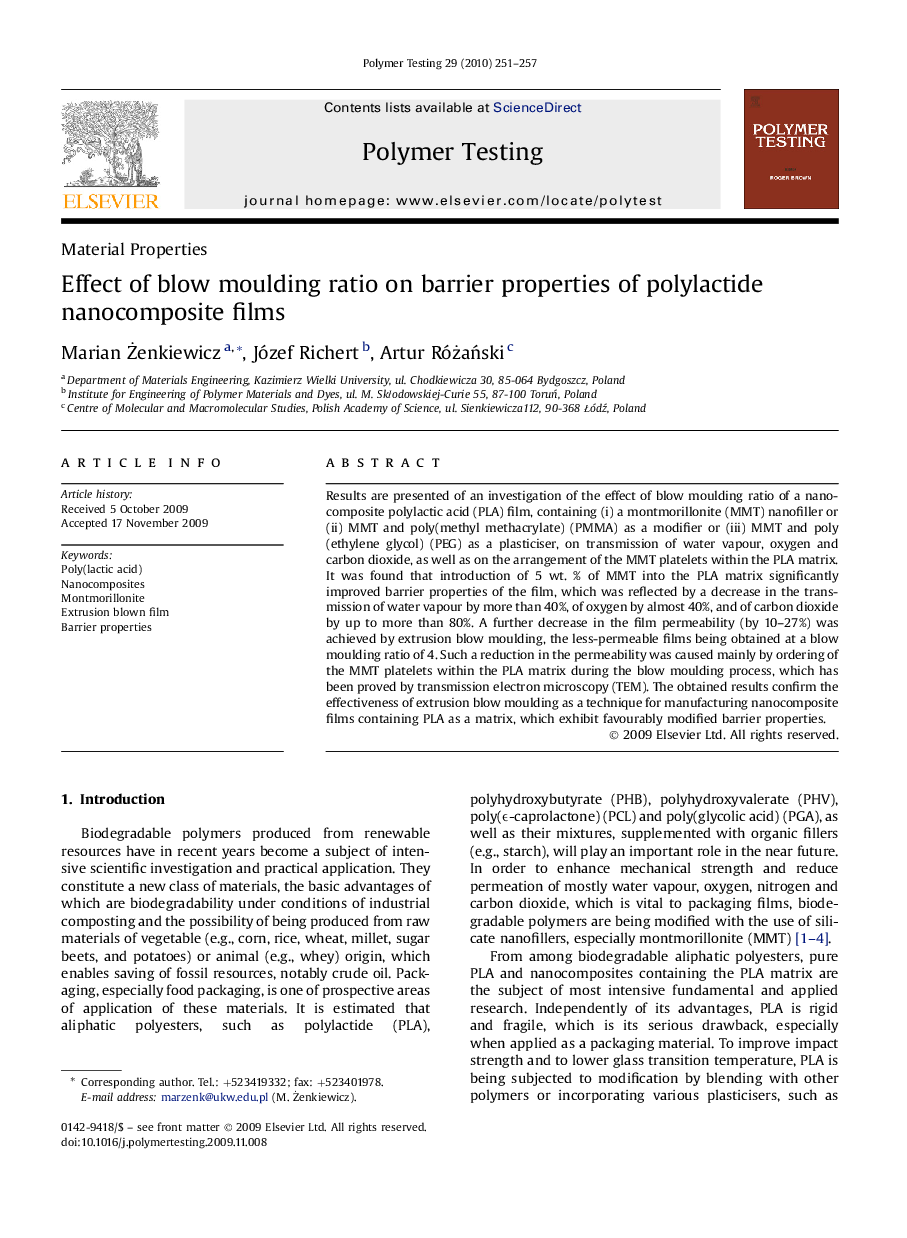| Article ID | Journal | Published Year | Pages | File Type |
|---|---|---|---|---|
| 5207169 | Polymer Testing | 2010 | 7 Pages |
Abstract
Results are presented of an investigation of the effect of blow moulding ratio of a nanocomposite polylactic acid (PLA) film, containing (i) a montmorillonite (MMT) nanofiller or (ii) MMT and poly(methyl methacrylate) (PMMA) as a modifier or (iii) MMT and poly(ethylene glycol) (PEG) as a plasticiser, on transmission of water vapour, oxygen and carbon dioxide, as well as on the arrangement of the MMT platelets within the PLA matrix. It was found that introduction of 5 wt. % of MMT into the PLA matrix significantly improved barrier properties of the film, which was reflected by a decrease in the transmission of water vapour by more than 40%, of oxygen by almost 40%, and of carbon dioxide by up to more than 80%. A further decrease in the film permeability (by 10-27%) was achieved by extrusion blow moulding, the less-permeable films being obtained at a blow moulding ratio of 4. Such a reduction in the permeability was caused mainly by ordering of the MMT platelets within the PLA matrix during the blow moulding process, which has been proved by transmission electron microscopy (TEM). The obtained results confirm the effectiveness of extrusion blow moulding as a technique for manufacturing nanocomposite films containing PLA as a matrix, which exhibit favourably modified barrier properties.
Related Topics
Physical Sciences and Engineering
Chemistry
Organic Chemistry
Authors
Marian Å»enkiewicz, Józef Richert, Artur RóżaÅski,
